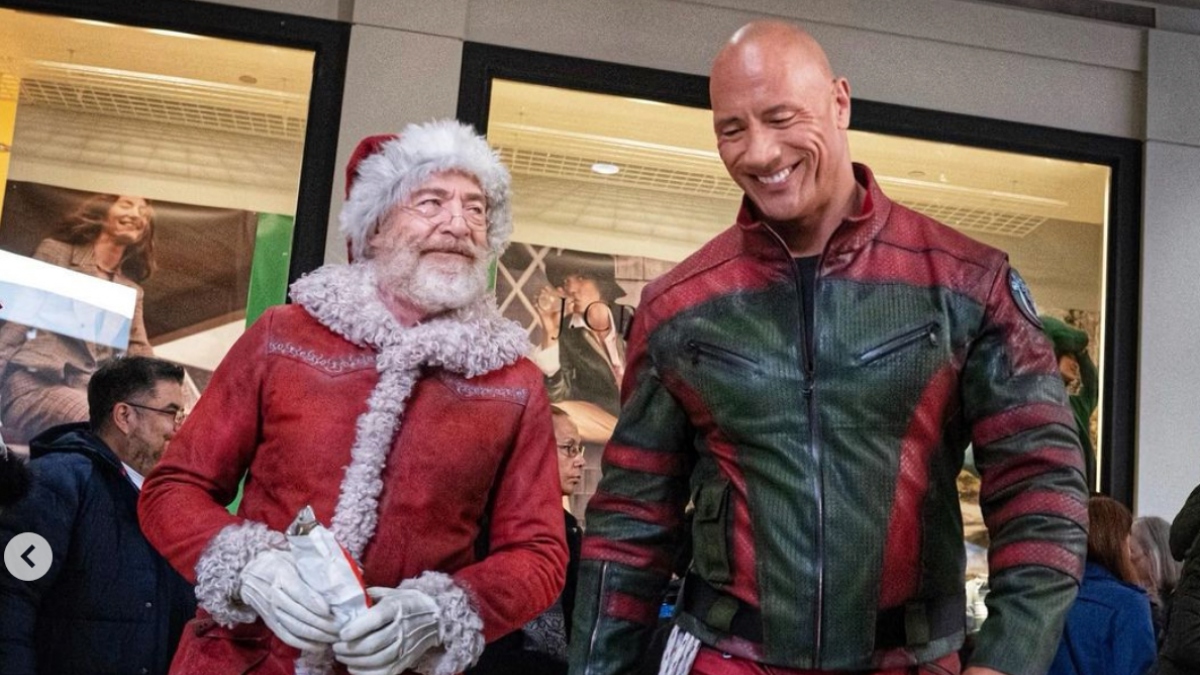
Here's ads banner inside a post
Dwayne Johnson’s Red One: A Holiday Film Misfire Hollywood Should’ve Seen Coming
When Dwayne “The Rock” Johnson, one of Hollywood’s most bankable stars, signed on for Red One, expectations soared. The movie was pitched as a high-concept holiday action-comedy, promising to reimagine Christmas movies for a modern audience. With Johnson’s star power, a generous production budget, and a cast of A-listers, Red One seemed poised to deliver a fresh take on holiday cinema. Yet, upon its release, the movie failed to resonate with critics and audiences alike, sparking questions about Hollywood’s ongoing struggle to balance innovation with nostalgia in the Christmas genre.
A Promising Start: The Allure of Dwayne Johnson and Holiday Films
The idea behind Red One was undeniably intriguing. Combining the explosive charisma of Dwayne Johnson with the universal appeal of Christmas seemed like a surefire recipe for success. Holiday films have long been a staple of Hollywood, offering studios a chance to capitalize on feel-good storytelling and seasonal sentimentality.
Here's ads banner inside a post
Johnson, known for turning action franchises (Fast & Furious, Jumanji) into box office juggernauts, seemed like the perfect choice to reinvigorate the holiday genre. Early promotional material teased a blend of heartwarming Christmas cheer with high-octane action sequences—something akin to Die Hard meets Elf. It was ambitious, bold, and exactly the kind of gamble Hollywood loves to market.
The Problematic Recipe: Mixing Too Many Genres
Despite the excitement, cracks in the concept began to emerge as the first trailers dropped. While audiences were intrigued by the premise, many were confused about what kind of movie Red One was trying to be. Was it a heartfelt Christmas story with comedic undertones? Or was it a full-throttle action flick with festive trimmings?
Here's ads banner inside a post
This genre-blending dilemma plagued the film from start to finish. By trying to cater to everyone—families, action enthusiasts, comedy lovers—the movie failed to carve out a clear identity. The result? A bloated narrative that neither delivered the thrills of a great action film nor captured the magic of a timeless Christmas story.
A Script That Lacked Spark
At the heart of Red One’s failure was a lackluster script that leaned too heavily on clichés. The film tried to cram in every Christmas movie trope imaginable: a reluctant hero rediscovering the holiday spirit, a comically evil villain threatening Christmas, and even a sentimental subplot involving a child’s wish. While these elements could have been charming, their execution felt formulaic and uninspired.
The humor, too, was hit-or-miss. Johnson’s natural charisma shone in a few moments, but much of the comedy relied on overused slapstick and tired one-liners. For a movie positioned as a reimagining of Christmas cinema, Red One felt like a patchwork of old ideas recycled without the wit or originality needed to make them shine.
The Curse of Big-Budget Holiday Films
One of Red One’s most glaring issues was its over-reliance on spectacle. The movie’s massive budget was evident in its elaborate set pieces, CGI-heavy action scenes, and glossy production design. However, these elements often overshadowed the story, making the film feel more like a generic action blockbuster than a Christmas movie.
This misstep is emblematic of a broader problem in Hollywood’s approach to holiday films. In recent years, studios have prioritized flashy effects and star-studded casts over the heartfelt storytelling that made classics like Home Alone or It’s a Wonderful Life endure. While modern audiences appreciate high production values, the core appeal of a Christmas movie lies in its ability to evoke warmth, nostalgia, and a sense of togetherness—qualities Red One struggled to capture.
Dwayne Johnson: A Star Out of Place?
Dwayne Johnson’s larger-than-life persona, while a major draw for the film, may have been a double-edged sword. Known for his action-hero roles, Johnson brought his signature charisma and physicality to Red One. However, his usual brand of high-energy bravado felt somewhat out of sync with the softer, more sentimental tone audiences expect from Christmas movies.
To his credit, Johnson attempted to show a more vulnerable side in certain scenes, but these moments were often undermined by the film’s insistence on returning to over-the-top action. This tonal inconsistency made it difficult for viewers to connect with his character on an emotional level, further dampening the film’s impact.
The Bigger Picture: Hollywood’s Christmas Conundrum
The failure of Red One is not just a reflection of the film’s own shortcomings but also a symptom of a larger issue in Hollywood. In recent years, the Christmas movie genre has become increasingly formulaic, with studios churning out saccharine, cookie-cutter films that rely on nostalgia rather than innovation.
At the same time, attempts to modernize the genre often fall flat, as filmmakers struggle to balance traditional holiday themes with contemporary storytelling trends. Red One’s ambitious yet flawed execution highlights the challenges of finding this balance. It’s a reminder that while star power and big budgets can attract attention, they are no substitute for a well-crafted story.

What Red One Could Have Been
Despite its shortcomings, Red One had the potential to be something special. A tighter script, a clearer vision, and a greater emphasis on heartfelt storytelling could have elevated the film from a forgettable misfire to a holiday classic. The idea of blending action with Christmas cheer isn’t inherently flawed—movies like Die Hard and The Nightmare Before Christmas have done it successfully. However, these films succeeded because they understood their identity and stayed true to their vision.

